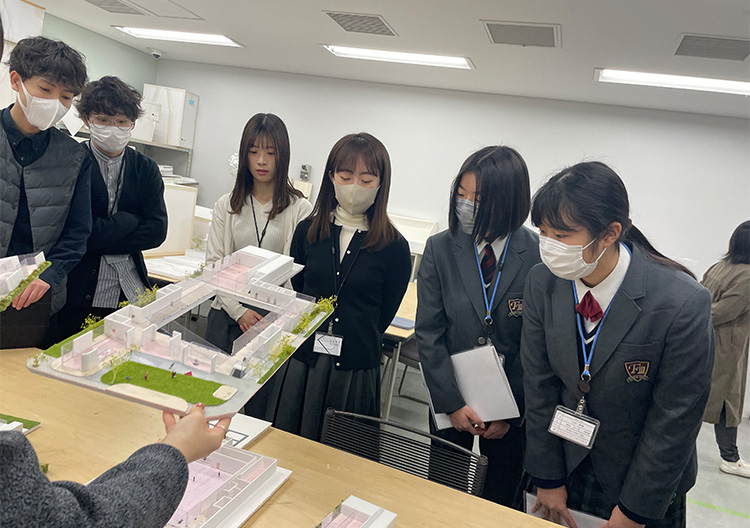
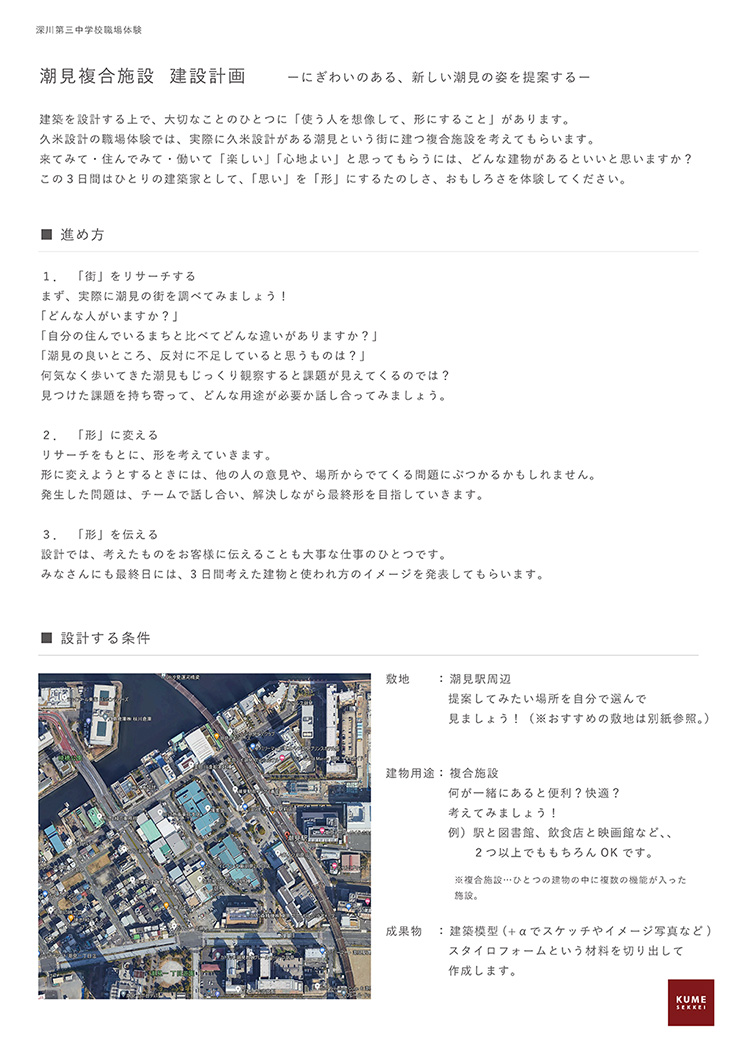
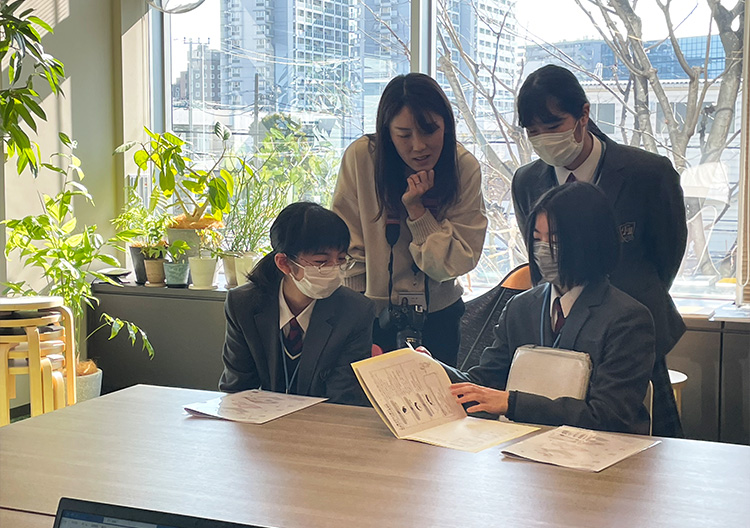
Every year, Kume Sekkei organizes a work experience program for Fukagawa Daisan Junior High School, where first-year employees are in charge of everything from determining assignments to providing guidance for the three days.
Last year, we gave the students the assignment of "Fukagawa Daisan Junior High School and Etchujima Elementary School Rebuilding Plan," asking them to think about how they could change the familiar buildings they used daily and make a proposal and presentation. The proposals exceeded our expectations. This year, hoping to broaden their horizons, we asked them to take on a new challenge: the "Shiomi Complex Construction Project." The work experience started with a walk around Shiomi, Koto-ku, a home to Kume Sekkei's head office, to conduct research.
In the sunshine, warm for late January, the junior high school students and their instructors walked around the streets of Shiomi. As they walked through the town, where they would usually stroll around casually, paying attention to the movement of people, the height of buildings, and what facilities exist, they experienced the issues the city faced. This city walk helped them understand the importance of the research on the surrounding environment conducted during the design process of a building. Later, we learned from their presentation that the comments they received from the instructors during the walk had provided clues for their proposals.
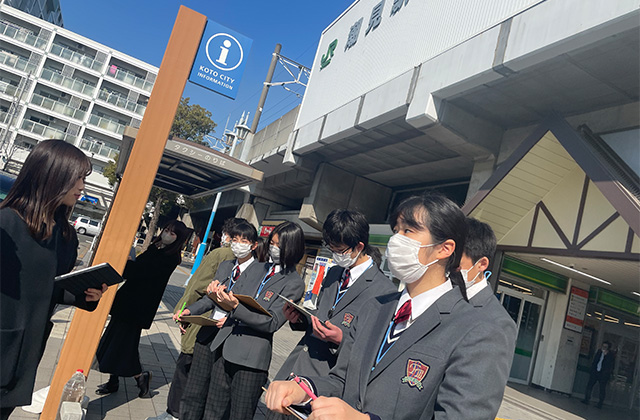
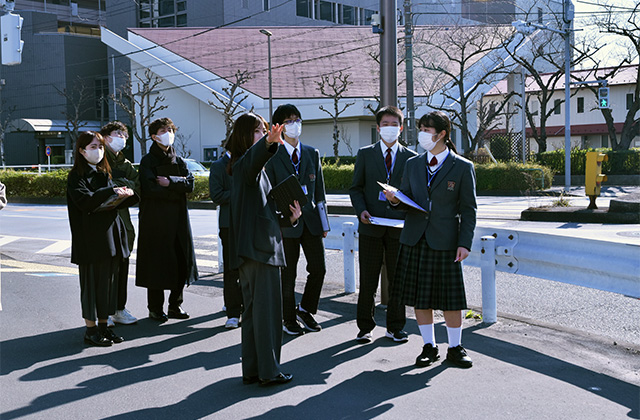
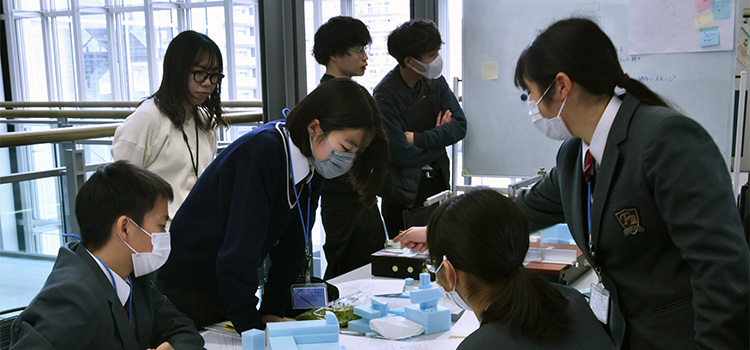
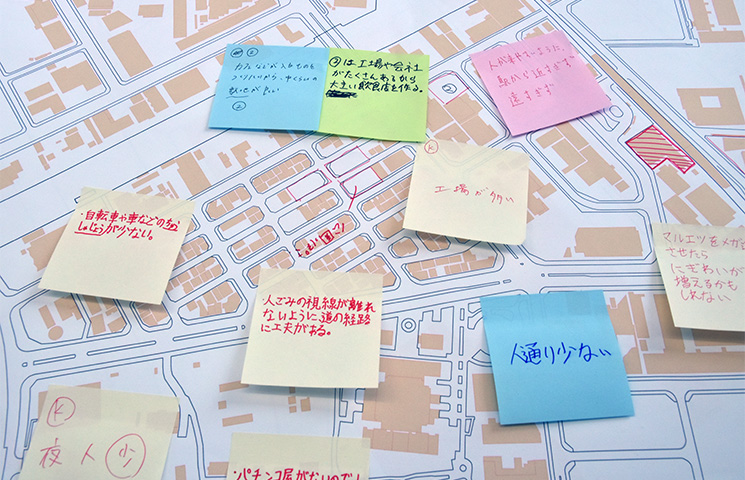
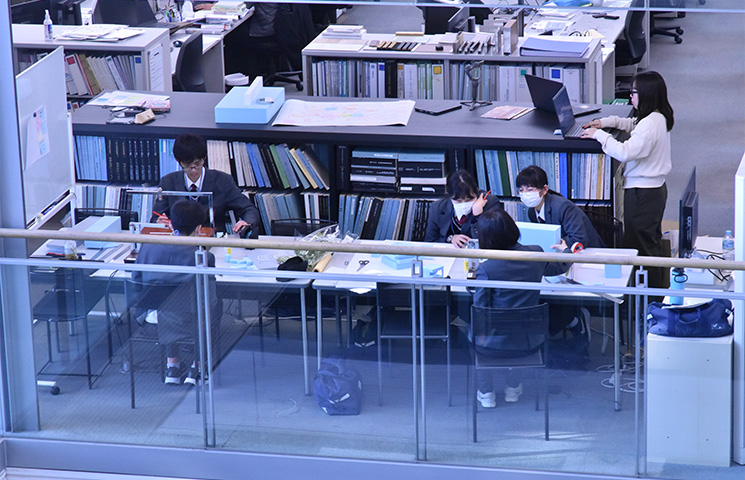
We divided the streets we walked through by areas and wrote down the issues each area faced. We then considered what environment each area had, what facilities were lacking in the area, and what facilities people would want. Numerous issues were raised, such as, "There seems to be little pedestrian traffic and no place to relax," and " We need supermarkets, drugstores, and restaurants that people from nearby businesses can use." The instructors were ready to advise on how to give shape to these assignments next.
After identifying issues, the junior high school students spontaneously began drawing sketches on sticky notes even before hearing any advice in front of the enthusiastic instructors. They made sketches based on many ideas, such as: "Why not create a glass-walled café to make the building a gathering place and connect it to the city?"; "How about creating an atrium?"; "Maybe the building should be taller on the side where there are many apartments, but lower on the entrance side of the facility so that people can easily gather there," and "I want to design a stepped building." Then, they created study models and floor maps while checking their priorities to determine which combination would lead to the building as they envisioned before creating the final model.
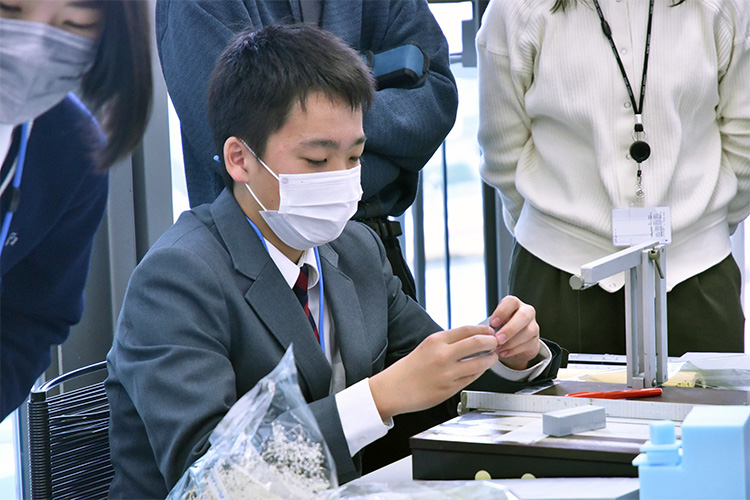
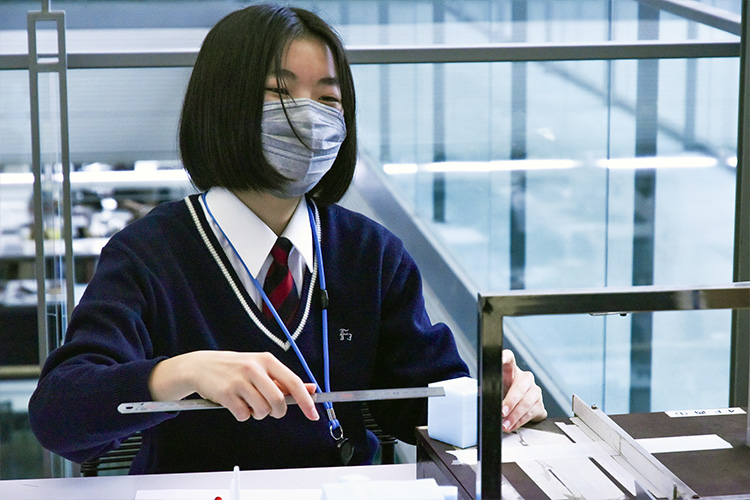
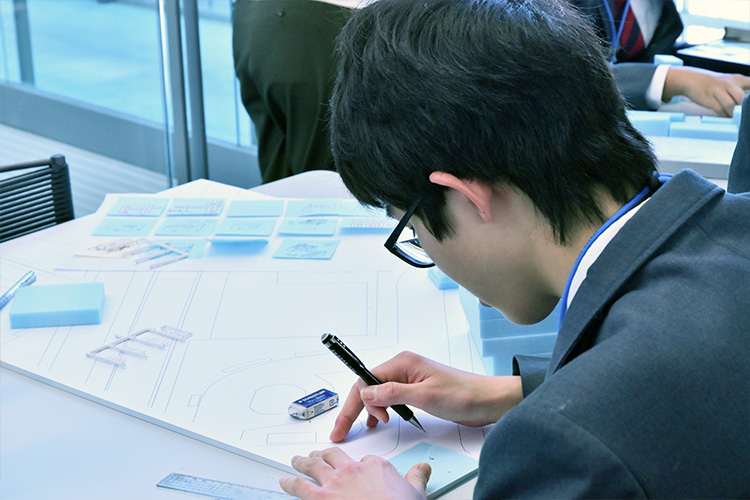
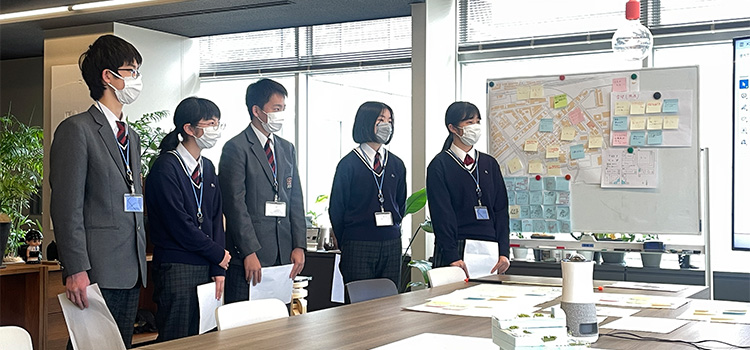
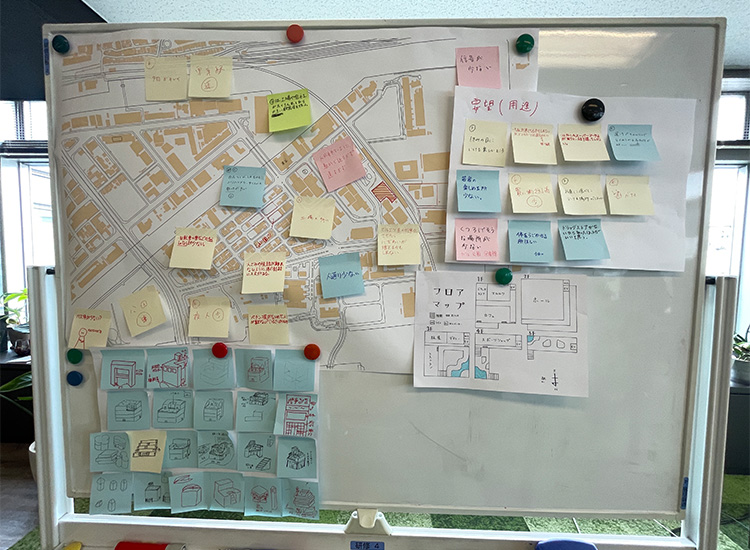
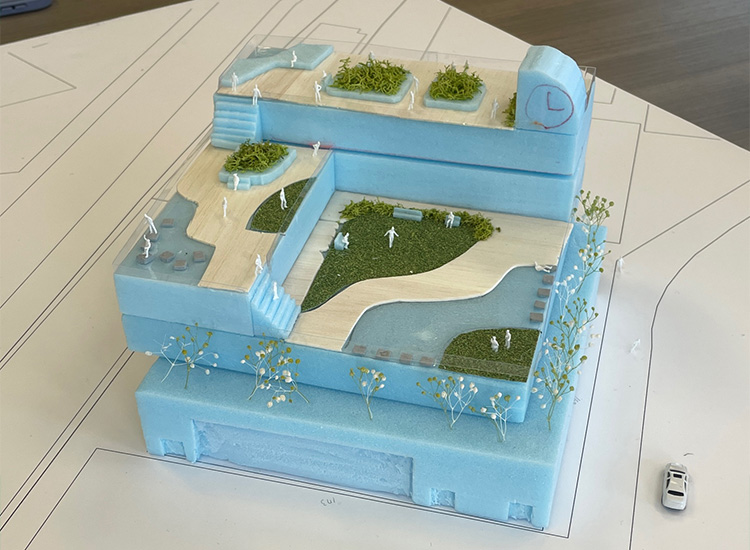
On the final day, many employees, besides the instructors, participated in the presentation of their results. In front of a sheet compiling their sticky notes and the final model, the team presented the results of their studies based on a draft they had prepared for their assigned sections. Those who participated were surprised at the high degree of accomplishment.
During the Q&A session after the presentation, we asked them what they thought as they undertook the assignment. They expressed their thoughts in clear words, and we were happy that their responses reflected a clear understanding of what architects do daily, precisely what we had wanted them to perceive through the work experience. The instructors who spent the three days with the students were impressed by how they spontaneously worked with their hands before giving them advice and were inspired by their attitude toward design. We hope that this work experience will serve as a signpost for those who wish to pursue a career in architecture in the future.